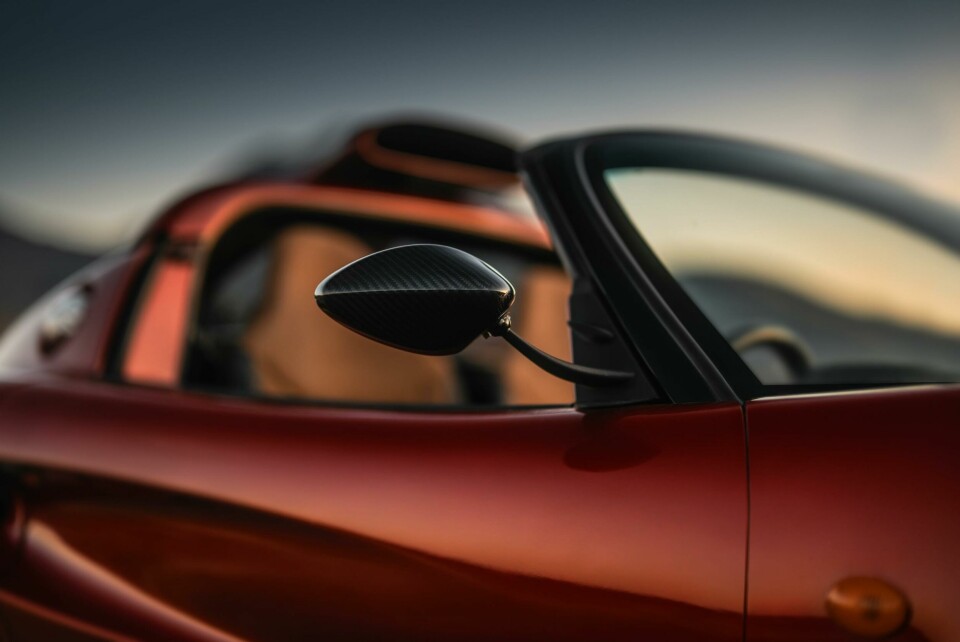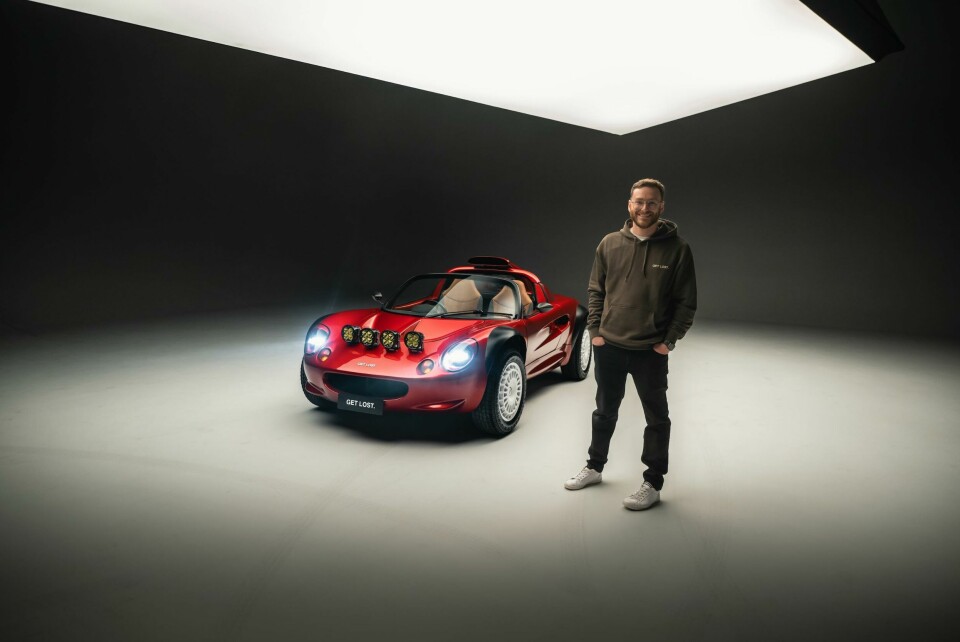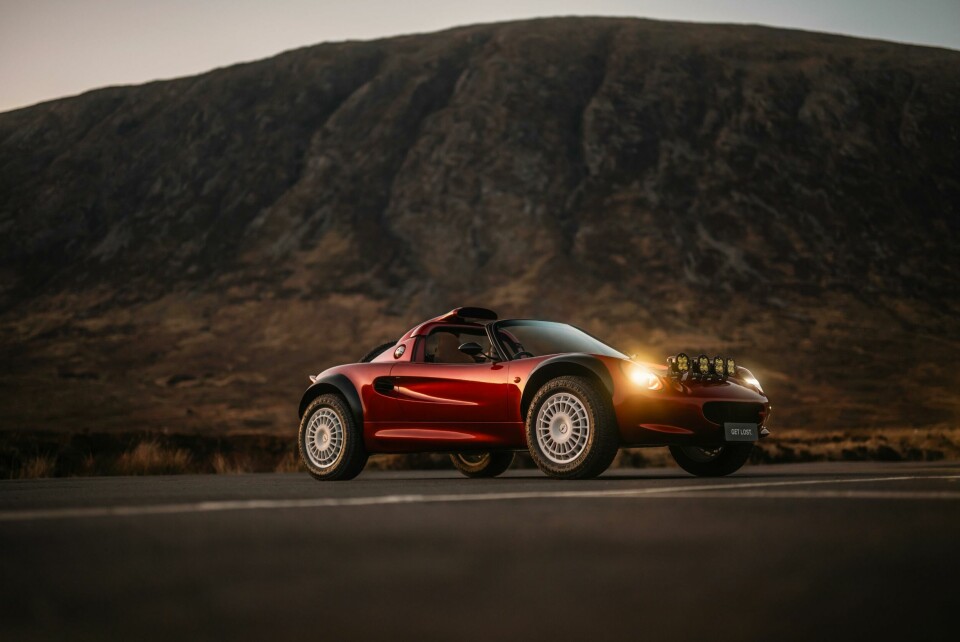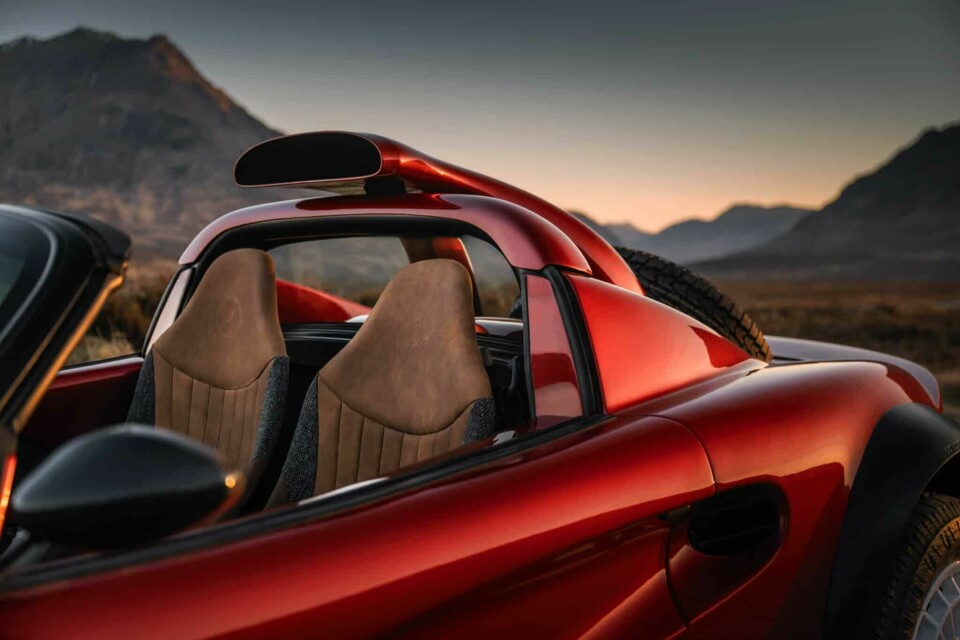
Meet the photographer that designed an off-road Lotus
The original Lotus Elise has been reimagined as an all-roader and designed by an unlikely candidate
Most car enthusiasts will have dreamed of designing their own model at one stage or another. Very few get the chance to pursue such an endeavour beyond a kit car in their garage. For photographer George Williams, who has plied his trade professionally for some of the biggest names in the supercar world, a fascination of what works on camera led him to pursue his own project: Get Lost.
Many designers segue between different industries, perhaps moving from cars to watches, clothes to boats or wherever else a crossover of skills allows. It is uncommon to see a photographer move into something as niche and complex as car design. Hearing Williams’ back story, it should not come as a complete surprise but that does not make this any less unexpected.

His day job not only involves snapping exotic models (of the four-wheel variety) but also engaging closely with various stakeholders within the brand, from sales and marketing to engineering and, yes, design. He has always had a fascination with light, zippy cars like the Caterham Seven and over the years has gradually honed a true labour of love in a totally custom, bright purple Lotus Exige. “I’m a massive car nut and the photography enabled me to be around all these amazing cars,” Williams told CDN.
Understanding how to modify and build a car combined with a deeper understanding of how cars are created in the first place ultimately led to a lightbulb moment several years back. Two weeks ago, the culmination of some intense work was revealed with Get Lost, a utilitarian all-road take on the S1 Lotus Elise. Why this model in particular – not exactly the natural jumping off point for an adventure vehicle.
It’s a bit silly and just put smiles on people’s faces
“I grew up with my father having Caterham Sevens, so the whole idea of a lightweight car is ingrained in me,” Williams says. “Heavy cars are always a bit disappointing and I think that’s why a driver’s car is usually a certain way.”
Indeed, characteristics will typically include: low weight, low body, super sticky tyres and steering input in-line with a go kart. Williams knows this all too well having daily driven a Caterham himself for a while before getting the Exige, which involves plenty of scraping and wincing on roads that are anything less than manicured. This is part of the idea behind Get Lost: a driver’s car that can be driven properly, something that has a little ‘give’ in it and is less surgical. A car that can thrill on any mixture of roads.

“The Exige is a bit of a pain to drive,” admits Williams, “although I have done 75,000 miles in it by now. I wanted a car I can use and not worry, and I don’t think I’m alone in that. Everyone puts sticky tires on a Lotus, and in my opinion that ruins the dynamics. With this there is a bit of play but also a really nice ride quality.”
Get Lost does tap into a trend and comes as the concept of an ‘adventure vehicle’ is at an all-time high. Just look at the Lamborghini Huracan Sterrato, Porsche 911 Dakar or Morgan Plus Four CX-T. There’s the Ruf Rodeo. Even Meyers Manx dune buggies made their return a couple of years back. “It’s a bit silly and just put smiles on people’s faces,” says Williams of his project.
Get Lost combines various strains of inspiration; the roof scoop alone was influenced by three separate themes. “I’ve photographed so many vehicles and I tend to hone in on the details. I’ve always loved the Zonda Cinque Roadster roof scoop where it sits a bit proud, and I also loved the way McLaren did it where it splits either side for visibility – although you can’t see out the back of this because of the spare wheel. The third thing is this shape of the scoop mirrors the front grille. It’s one of those things most people won’t notice, but details are important.”
The process did not involve a huge amount of sketching, or work that Williams would consider showing in public at least, and instead was more of a digital function, relying mainly on Autodesk’s Fusion software. “Photoshop is so natural to me and the logical step was to start learning CAD so that I can actually make things for real,” he explains.
Although the process has gone largely smoothly, some elements proved challenging. For example, maintaining the classic proportions of the Elise while integrating monstrous wheel arches and a floating rear wing. “The spare wheel was actually incredibly difficult because of that wing,” he notes, “but I really wanted a floating rear wing.”
I’m not claiming to be a designer. I just realised an idea
The bold red paint was chosen by design. Not only by Williams, but by the original Lotus designers; the Get Lost prototype is shown in an original factory colour. He admits that he looked for the most striking factory paint he could find in the first instance, but will probably look to a custom finish when the project is further down the line. “As a photographer it is a unique position from which to approach this because you’re looking at it with different hats. I’m designing it so that it will photograph well, and at the same time I speak to a lot of designers in my job. This means I have to understand why they’ve made certain design decisions in order to represent that in the best way.”
In contrast to the loud exterior, the cabin is much calmer and appears to lean more towards premium look and feel than out-and-out rally car. Plush leather seat covers team well with tweed bolsters on the side, but much of the interior is left to the imagination for now.

Williams is hesitant to put a label on what the project is yet, exactly. The term prototype might best describe where it is at, sitting somewhere between the initial rolling concept and the next stage of devleopment that will move things along to a more refined package both in terms of performance and fit and finish. It will surprise nobody to hear that a supercar photographer is not particularly keen to show the car in the metal until it is ready.
While he did not study design in any capacity, he points out that he didn’t study photography either – but that hasn’t stopped him forging a career as a photographer. He is wary not to label himself a designer, though, and has a deep respect for those who have dedicated their education and careers towards the craft. “I’m not claiming to be a designer at all. I just had an idea and I’ve realised it.”
Williams also emphasises that Get Lost is not a one-man-band situation. As much as this is a passion project he has had plenty of help in various aspects and wants to champion those around him; at this early stage the wider team and partnerships are still secret.
Where Get Lost separates itself from other corners of the restomod crowd is that, in his words, it is a design-led product. “Design is something that’s massively important to me,” Williams concludes. “It’s not just an Instagram build. This needs to be a car that, when I hand one over to a customer, it works and they’re happy and they love it. It’s a massive task for me and I’m lucky that I’ve got some other people involved and some incredible suppliers.”
The next step is to continue refining the build and get it ready for a public unveiling in pre-production form at some point in the near future. We look forward to it.













